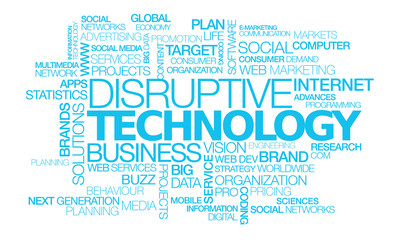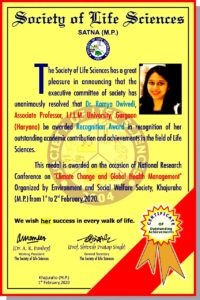Since Ancient time women have been regarded as goddesses because of the roles they adopt, from being a daughter to wife to mother to grandmother selflessly agreeing upon for the wellness of family. Their status although is perplexing to many, where sometimes they are considered as second gender and sometimes as the superior ones. This has been the only known constant change in women’s life. Ancient women and women of now are still known and regarded for possessing feminine like qualities, off which the top ones run from modesty to elegance to selfless to doer than a speaker and the ones who possess it well are mostly favored.
Men in past century feared women for being emotionally strong and bodily dominant, especially at the time when the biology behind menstruation was unknown and when all one could just see is how powerful a woman is, to be able to procreate, loose so much of blood and still be healthy. Then came the time when the extraordinarily yet uniquely customs and traditions set in and swept away the earned status of women. In Asia Purdah system, Dowry, Sati sub leveled the status of women and propagated female infanticide and foeticide, in Europe the perceived notion of true lady like features such as the ones dressed in corset with the expected feminine qualities were much favored while in mid eastern Burkhah system which still prevails, is fancily appreciated and widespread. Quite contrary to what it was like in previous century’s women in 21st century seem to have adopted so many new roles. They have set out new boundaries, bolding up to new challenges and are trying to make their space up in the social scenario. Women in 21st century, projects themselves as duly competent to the gender counterpart. Large number of women admissions in professions that earlier restricted them to join in due to their lack of physical strength, mental ability, social ineptness, immovability etc are now openly recruiting and applauding women for outperforming in those professions. Women are now joining politics, media, military, multinational companies, sports etc adopting leading positions constantly proving to the world that they are wrongly mistaken with their prejudice notion of restricted abilities. All of this has indeed changed the status quo of women externally. Women are given the status that they have longed for a long time. Even at home many women are now able to sail through the demands of personal and professional life. With measures like feminism, women empowerment, women’s rights and groups protecting women’s rights has ensured that women’s social stature is safeguarded and they can present themselves worthily. Hence it can be duly noted that women in today’s century is much more aware of their rights and status in the society and is trying their best to be able to match up with the growing nation’s advances and present themselves professionally at front.
Amidst this ideal situation where women are comforted and at peace professionally the real deal is when the number of successful women (personally and professionally) is counted, they are surprisingly very few in number. Besides what till date is preset for every women is their personal, professional, social, political, societal role which has been decided and unanimously agreed upon. These roles are further reinforced and are imbibed upon by our elderly ensuring that what has been previously followed is not challenged upon. Further more in a population which comprises of crore of people, 50% of it is women. It is astonishing to quote how very few women have acquired the top positions despite of being talented, how very few women manage to continue with their professional life after they get married or how few of women join work post maternity leave. Parallel to this, a report by APA claim that woman as compared to men is more susceptible to anxiety disorders (Yonkers, 2001 and Hoffman, 2011). If we were to see the happiness and life satisfaction it correlates well with the professional and personal satisfaction of the individual. Claiming that women have reached the success ladder professionally and are working and moving towards independence which earlier was taken away from them but what is really still making them so unhappy and discontented? Some might say that every woman is fighting a battle some are fighting battles at home, some are fighting battles at workplace, while some are fighting even tougher battles but aren’t men fighting the same battles is the real question. If we were to look at the proportionality of the battles men fight which may or may not be as aggravated as women’s especially considering the previous centuries in mind but men have their own battles like earning good, supporting the old parents, unrealistic portrayals of men by media etc now these battles are often overlooked since the world is attuned to look at the problems of women. Thanks to movement for men which recognizes the battles men faces too. Paying little or less heed to the existing congruence of the problem which men and women almost face parallel, what really needs to be stressed upon is who has better adaptability to cope with stress? Who is weak emotionally? Who has been trained to be independent? Who is not able to deal with daily life stressors and subjecting oneself to conditions because of not being able to cope with it?
There is one unidentified element that has inevitably skipped generations and till date plays vital role in the changing stature of women centuries by centuries- “The unrealistic expectation and fear of independence” which was highlighted by Collette Dowling, New York psychotherapist in her book called “Cinderella Complex”- derived for fairytale version, highlighting the psychological dependency issues in females. The commonality between the previous centuries or centuries today is how women is guided on what to do, how to do making them unconsciously assured that even if they go wrong someone will fix it up for them. Hence giving rise to dependability issues, mostly psychological which then takes many forms from emotional to financial to male oriented to society stimulated. Now this can further be acclaimed from the reports presented by psychologists and psychiatrists who have worked closely with women suffering from stress or are domestically abused. Few researchers tried to claim it through their researchers how women are never trained to be dependent (Wilson (1978), Wang (2007), Saha (2016) and Chastine (2019) and all they are looking for is a ‘knight in shining Armour’. Furthermore adding to the commonality, women in both the centuries strives to achieve independence which women in today’s world have achieved but what has got unnoticed is despite of being independent professionally women are not able to achieve emotional and psychological independence. It is the need of the hour to understand how women can be free emotionally and psychologically so as to achieve and fight in the real world and win the real battles. It goes unsaid that the nature of women’s status is subject to change depending on their social roles and the way they are brought up. Despite of some women being lone survivors or pretending to be one still seeks dependence in day to day lives being constantly assured that they have someone to look after and to fix everything which later manifests real life problems like marital conflicts, domestic violence, divorces, increased number of stress and anxiety issues because woman have been trained to listen and not speak up.
While it is hard for any women to accept that they are seeking dependence it is important for any women to first understand and connect with oneself and the challenges they face-
- Esteem issues
- Questioning self
- Seeking constant support and approval
- Incapable of facing life challenges and solving problems
- Need for reassurance and validation
- Interpersonal difficulties
Despite of being able to closely relate to it some women unwavering reject the idea of seeking dependence and might openly propagate the Independence they have earned professionally being naive to understand that being Independent professionally doesn’t mean being independent from Mind.
References
Chastine, V., & Darmasetiawan, N. K. (2019, March). Cinderella complex on working women. In 16th International Symposium on Management (INSYMA 2019).Atlantis Press.
Dowling, C., & Dowling, C. (1990). Cinderella complex. New York: Pocket Books.
Howell, H. B., Brawman-Mintzer, O., Monnier, J., & Yonkers, K. A. (2001). Generalized anxiety disorder in women. Psychiatric Clinics of North America, 24(1), 165-178.
McLean, C. P., Asnaani, A., Litz, B. T., & Hofmann, S. G. (2011). Gender differences in anxiety disorders: prevalence, course of illness, comorbidity and burden of illness. Journal of psychiatric research, 45(8), 1027-1035.
Saha, S., & Safri, T. S. (2016). Cinderella Complex: Theoretical Roots to Psychological Dependency Syndrome in Women. The International Journal of Indian Psychology ISSN, 2348-5396.
Wang, Y. H., & Liao, H. C. (2007).The Psychological Dependency Syndrome in Women of Taiwan-An Exploration of Cinderella Complex. 台灣醫學人文學刊, 8(1&2), 25-36.
Wilson, M. L. (1978). College women and the Cinderella complex. Educational Horizons, 56(3), 137-139.










